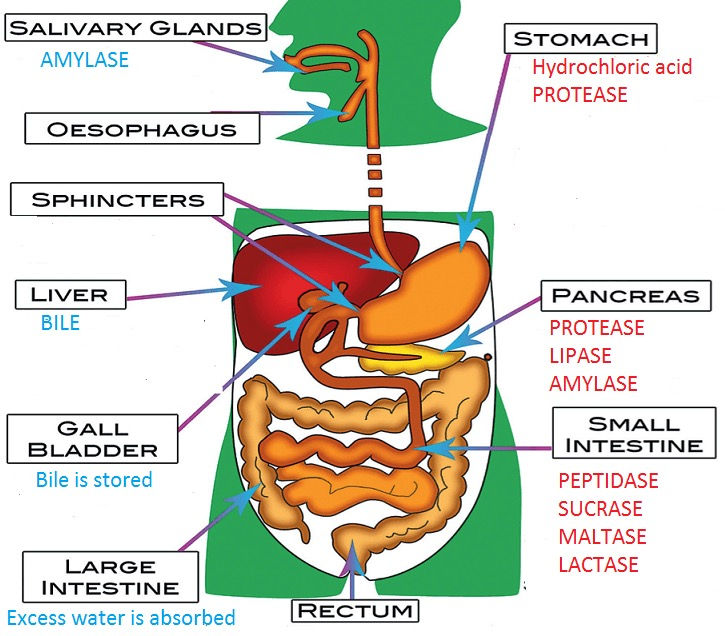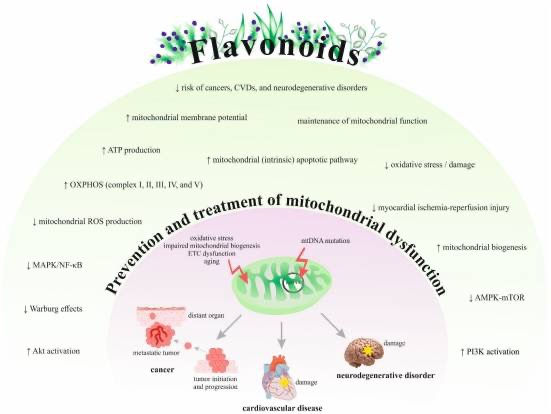Wound Healing & Flavonoids
- fowlerfritz8
- Apr 8, 2023
- 5 min read
Abstract
Flavonoids are found as the most abundant bioactive compounds all around the world. It is found in a number of medicinal plants that are used as wound healing agents in traditional medicinal uses such as Buddleja globosa, Moringa oleifera, Lam, Butea monosperma, Parapiptadenia rigida and Ononis spinosa. Flavonoids nowadays are being used in different formulation and wound healing dressings. Inflammation, proliferation and reepithelialization are involved in wound healing. Most of the wound healing medicinal plants possess multiple flavonoids that act as synergistic effect or combined effect. This chapter briefly reviews the role of flavonoids as wound healing agent in traditional and modern medicine.
Flavonoids are found as the most abundant bioactive compounds all around the world. It is found in a number of medicinal plants that are used as wound healing agents in traditional medicinal uses such as Buddleja globosa, Moringa oleifera, Lam, Butea monosperma, Parapiptadenia rigida and Ononis spinosa. Flavonoids nowadays are being used in different formulation and wound healing dressings. Inflammation, proliferation and reepithelialization are involved in wound healing. Most of the wound healing medicinal plants possess multiple flavonoids that act as synergistic effect or combined effect. This chapter briefly reviews the role of flavonoids as wound healing agent in traditional and modern medicine.
The care of acute and chronic wound is the biggest challenges worldwide [1]. There are different kind of wounds, among them burns remain a major public health problem in developing countries [2]. There are different ways to heal the wound such as nano dressing [3], negative pressure [4], medicinal plants [5], synthetic polymers [6], gene therapy [7], stem cell [8], growth factors [9] and Functionalized Silk Biomaterials [10]. Flavonoids is one of an important bioactive source from medicinal plants that possess different pharmacological activities such as antioxidant, free radical scavenging capacity, coronary heart disease prevention, hepatoprotective, anti-inflammatory, anticancer activities, growth regulators [11]. Wound results in edema, redness followed by pain. Inflammation is the major characteristics as a result of wound due to the release of eicosanoids, prostaglandins, leukotrienes and reactive oxygen species. By controlling all these factors will result in healing the wound faster. Recent students on Buddleja species and three Ghanaian species Spathodea campanulata, Commelina diffusa and Secamone afzelii showed antioxidant and anti-inflammatory properties. These antioxidant and anti-inflammatory properties were due to the presence of flavonoids and other bioactive compounds that works in combination to heal the wound [12]. The chapter deals with the study of role of flavonoids, mechanism of action that involves in healing the wound.
2. Wound healing medicinal plants
Healing the wound with medicinal plants is an alternative method of treatment used by traditional wound healer. The most commonly used plants all over the world is Curcuma longa. In Malaysia, there are few more species that act as wound healing such as Elephantopus scaber, Centella asiatica, Clinacanthus nutans and Aloe barbadensis. List of famous medicinal plants that plays an important role in wound healing is mentioned in Table 1.
Medicinal plantsPharmacological usesReferenceAloe barbadensis millerAnti-oxidant, anti-inflammatory, wound healing, antimicrobial[13, 14, 15, 16]Azadirachta indicaAnti-malarial, wound healing, antiseptic, febrifuge, antihelminthic, anti-microbial[17, 18]Curcuma longa Linn.Hepatoprotective, nephroprotective, anticoagulant, wound healing, anti-HIV to combat AIDS, anti-microbial[19, 20]Clinacanthus nutansAnti-papillomavirus infectivity, anti-viral activity on varicella-zoster virus, anti-inflammatory activity, anti-herpes simplex virus type 1 and type 2 activity, anti-oxidant and protective effect against oxidative induced hemolysis[21]Chromolaena odorataWound healing, analgesic, anti-inflammatory and antipyretic activities[22, 23]Centella asiaticaAntimicrobial activity, anticancer activity, wound healing activity, neuroprotective activity, immunomodulatory activity, anti-inflammatory activity, hepatoprotective activity, insecticidal activity, and antioxidant activity[24, 25]Elephantopus scaberAntimicrobial, hepatoprotective, antioxidant, antidiabetic, anti-inflammatory, analgesic, antiasthmatic, antiplatelet, and wound healing[26]Euphorbia neriifoliaAnalgesic, hepatoprotective, immunostimulant, anti-inflammatory, mild CNS depressant, wound healing, radioprotective[27, 28]Lantana camaraAnticancer activity, wound healing, anti-inflammatory activity, antidiabetic activity, anthelmintic, antibacterial activity, antifungal activity, hepatoprotective activity, antioxidant activity, larvicidal activity[29, 30]Tridax procumbensHepatoprotective activity, anti-inflammatory, wound healing, antidiabetic activity, hypotensive effect, immunomodulating property, bronchial catarrh, dysentery, diarrhea and to prevent falling of hair promotes the growth of hair, and antimicrobial activity[31] Table 1. List of medicinal plants in healing the wound.
3. What is the role of flavonoids on human health? Flavonoids are phenolic substances isolated from a wide range of vascular plants, with over 8000 individual compounds known [32]. They possess wide variety of activities such as anti-microbial [33], anti-oxidant [34], anti-cancer [35], anti-inflammatory [36] and wound healing [37]. Among all flavonoids there are some flavonoids such as flavan-3-ols and flavonols, possess a wide spectrum due to suppress a number of microbial virulence factors and show synergism with antibiotics [38]. While there has been a major focus on the antioxidant properties, there is an emerging view that flavonoids, and their in vivo metabolites, do not act as conventional hydrogen-donating antioxidants but may exert modulatory actions in cells through actions at protein kinase and lipid kinase signaling pathways. Flavonoids, and more recently their metabolites, have been reported to act at phosphoinositide 3-kinase (PI 3-kinase), Akt/protein kinase B (Akt/PKB), tyrosine kinases, protein kinase C (PKC), and mitogen activated protein kinase (MAP kinase) signaling cascades. Inhibitory or stimulatory actions at these pathways are likely to affect cellular function profoundly by altering the phosphorylation state of target molecules and by modulating gene expression [39]. In many molecular mechanisms of action for prevention against cancer, flavonoids play a major role by interacting between different types of genes and enzymes. Many mechanisms of action have been identified, including carcinogen inactivation, antiproliferation, cell cycle arrest, induction of apoptosis, inhibition of angiogenesis, antioxidation, and reversal of multidrug resistance or a combination of these mechanisms [40].
4. Flavonoids and wound healing
Catechins are one of the most widely tested classes of flavonoids for their wound healing modulation [41]. Lastly, considering that the delay in wound healing is due to insufficient or excessive fibroblast activity, some authors suggest that inhibition of fibroblast growth by flavonoids such as apigenin is beneficial for the treatment of skin injuries. Luteolin is another famous flavonoid present in medicinal plants, vegetables and fruits. It was also found as wound healing agent in different wound models [42]. Rutin which is found in many medicinal plants also possess wound healing activities [43]. List of medicinal plants possessing flavonoids in healing the wound is mentioned in Table 2.
Medicinal plantsFlavonoids isolatedWound healing modelReferenceBuddleja globosaLinarin (acacetin-7-O-rutinoside), luteolin and 6-hydroxyluteolinFibroblast growth stimulation[44]Moringa oleifera LamVicenin-2, kaempferol and quercetinCell viability, proliferation, and wound scratch test assays.[45]Butea monospermaGenistein and prunetineExcision wound model, Incision wound model, Dead space wound model[46]Parapiptadenia rigidaCatechinFibroblast proliferation assay[41]Ononis spinosa LOnonin, sativanone-7-O-glucosideLinear incision and circular excision wound models and hydroxyproline estimation assay[47]Table 2. List of medicinal plants possessing flavonoids in healing the wound.
5. Flavonoids in fruits and vegetables Flavonoids found in number of fruits and vegetable. A study indicates a number of vegetable (28) and fruits (9) that possess anti-carcinogenic flavonoids [48]. Fruits such as apple, berries, and onions possess cardioprotective properties and bring a positive impact on blood pressure, vascular function and serum lipid levels [49].
6. Conclusion Flavonoids is an essential bioactive compounds found in our daily life in the form of fruits and vegetable. It possesses wound healing properties. There are number of research that showed the importance of flavonoids as wound healing agent. For example the flowers of Ipomoea carnea belong to family Convolvulaceae. The isolated bioactive compounds such as Kaempferol, Kaempferol-3-O-β-D-glucoside confirm the wound healing activities on all animal models [50]. There is yet to explore its structure activity relationship on different wound models. Furthermore, there is little knowledge about mechanism involve in wound healing. Optimization use of flavonoids and their dosage as wound healing is another aspect that yet to explore.




Comments